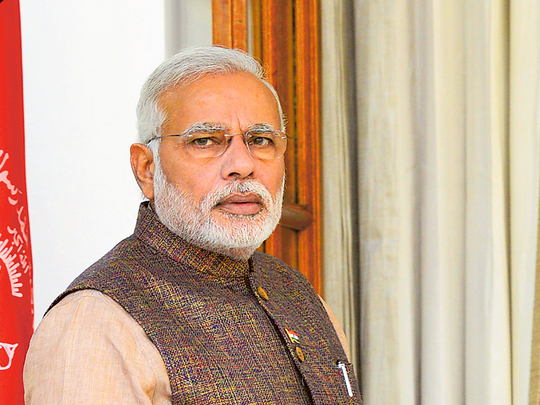
Uttar Pradesh (UP) has a population of almost 200 million and sends the largest number of parliamentary members to the Lower House of India’s parliament. If it were an independent country, it would be the sixth largest in the world.
UP is also India’s spiritual cradle and imperial heartland. Elections to its legislature, due in 2017, may be held earlier, and if the Bharatiya Janata Party (BJP) wins decisively, it could be devastating for the Congress. It will set the pace for the general elections of 2019 and Indian Prime Minister Narendra Modi will be well on his way to a second term.
The possibility of a ten-year rule by Modi spells the end of the Congress party or at least of the ‘dynasty’. Many would ask rhetorically, aren’t they synonymous? Sonia Gandhi is said to be in poor health and Rahul Gandhi beyond redemption, a prematurely old-young man, a Rip Van Winkle working on a Windows 95 style of outdated left-of-centre politics. His sister Priyanka Vadhra could step into the breach, but her husband is an albatross around her neck that she can never shake off.
So, are we set for Modi for life? He is ambitious enough to want it, the raw hunger for power is there. He is not corrupt, is hard working and is a prime minister compulsively driven by his idea of India — one that does not particularly believe in diversity, is pro-business and dominated by a middle class that adores its prime minister, even if its poor are hesitant. And in his consigliere, Amit Shah, the BJP president, Modi has the perfect strategist to work the sectarian fault lines, wherein development will be the overarching leitmotif, but the game on the ground will be driven by divisive politics — a win-win strategy that both have perfected over time.
The supposed exodus from Kairana, a city in UP, is but a recent example of the BJP’s doublespeak. The BJP alleged that the Hindus were driven out by the Muslim residents of Kairana, but this claim was found to be baseless. There were economic reasons — a migration to fresh pastures — that drove these residents and the so-called exodus cut across the religious divide, both Muslims and Hindus were migrating for better opportunities. Yet, in a section of the media it was painted as though the Hindus were fleeing their homes.
UP is not just the imperial heartland, but also where the mother of all elections are won and lost. Win UP, win Delhi. And two issues stand out in that state — the Ayodhya movement of the 1990s and the Mandal movement of the early 1980s and its spillover. The first was primarily religious in nature, with the objective of constructing a temple where the Babri Masjid (mosque) was located (the mosque was demolished in 1992), while the latter was ostensibly an affirmative action to help the disadvantaged, the socially and educationally backward sections of society, also called the ‘other backward castes’ (OBCs) to distinguish them from Dalits, who are at the lowest end of the caste spectrum.
Sharp distinction
The BJP was the force behind Ayodhya while a clutch of parties — the Samajwadi Party (SP), the Janata Dal United (JD-U) and Rashtriya Janata Dal (RJD) — are the remnants of the Mandal movement; much of the social justice objectives of this affirmative action have been belied.
The Ayodhya agitations are also referred to as the Kamandal Movement (Kamandal is a water spout used by artists) to make a clever and sharp distinction from the Mandal movement (the Commission formed for social justice was headed by B.P. Mandal). These two causes were and are inherently incompatible. Yet, Modi and Shah have ingeniously co-opted large sections of the Mandalites to their cause, triggering Shah’s boast that “both Mandal and Kamandal are with us”.
The demolition of the mosque in 1992 and the surge of the Kamandal movement forced the decline of the Congress and two of its erstwhile supporters, Muslims and Dalits, flocked out of its fold. The disillusionment was a long-time coming for the Muslims. Before the demolition of the Babri Masjid, their winter of discontent had set in and in their desperate quest to protect their interests, they aligned themselves with the Mandal movement. The Dalits, on the contrary, were much smarter and formed their own party with two leaders — Kanshi Ram and Mayawati, founding the Bahujan Samaj Party, wih Mayawati serving four terms as UP chief minister.
If the Modi–Shah team’s achievements in bringing together the Mandal and Kamandal are remarkable, what is truly outstanding are the inroads they have made into the Dalit vote. During the 2014 parliamentary elections, BJP could not have won 72 of the 80 seats in UP without Dalit support. There is no reason to believe they will not be able to repeat this during the upcoming elections to the state legislature.
Should the BJP decisively win, the Modi idea of India will be inerasable. Its imprint will be for the keeps. An indelible watermark on the palimpsest, called India.
Ravi Menon is a Dubai-based writer, working on a series of essays on India and on a public service initiative called India Talks.








